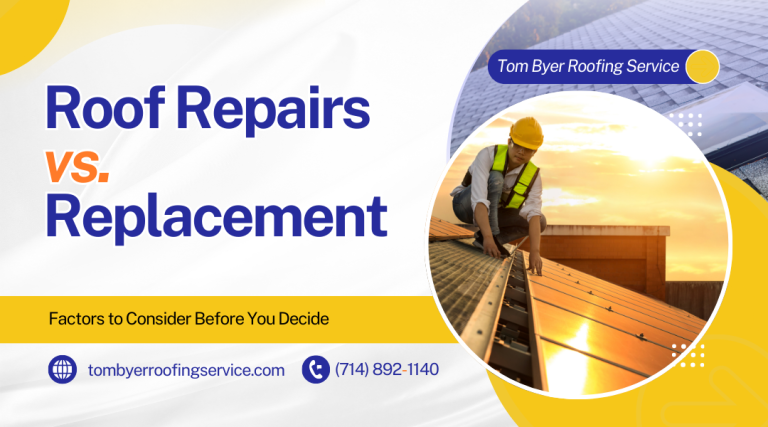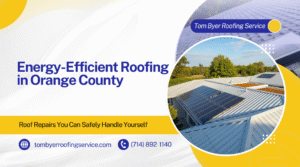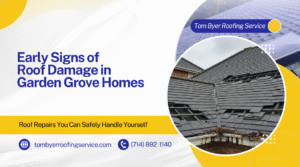When it comes to maintaining your home, deciding between roof repairs and replacement can feel overwhelming. Understanding the condition and age of your roof is key to making the right decision, as sometimes minor repairs can save you money compared to a full replacement. Evaluating factors such as the extent of damage, age of the roofing material, and your budget will help you determine the best course of action.
Your roof plays a crucial role in protecting your home from the elements, and ignoring its needs can lead to bigger problems down the line. It’s essential to recognize the signs that indicate whether a repair will suffice or if it’s time for a complete replacement. By knowing what to look for, you can avoid costly mistakes and keep your home safe and secure.
Throughout this article, we’ll guide you through the vital considerations that will assist you in making an informed choice. Grasping the main differences between roof repairs and replacement will empower you to take the right steps for your home and ensure it remains well-protected for years to come.
Roof Repairs And Replacement: What They Involve
When considering roofing work, understanding the difference between roof repairs and full replacements is essential. Each option involves distinct processes that cater to various needs based on the condition of your roof.
Roof Repair Basics
Roof repairs focus on fixing specific problems rather than replacing the entire structure. Common repairs include replacing damaged asphalt shingles, sealing leaks, and fixing flashing issues.
You may need repairs if your roof is relatively new. In this case, targeting localized areas is more cost-effective. Repairing shingle roofs typically involves:
- Inspecting for damage
- Removing damaged materials
- Installing new roofing materials, like asphalt shingles
These repairs help prolong the life of your roof while maintaining its functionality and aesthetics.
Full Roof Replacement Explained
A full roof replacement involves removing the entire existing roof and installing a new one. This option is often necessary when your roof is nearing the end of its lifespan, which for asphalt shingle roofs is typically 20 to 30 years.
Replacing your roof means considering various roofing materials, including metal roofing and newer options.
Key steps in the replacement process include:
- Inspection: Assessing the underlying structure
- Removal: Clearing off the old roofing
- Installation: Applying new materials, like asphalt shingles or metal roofing.
Choosing this route ensures long-term protection, energy efficiency, and can enhance your home’s value.
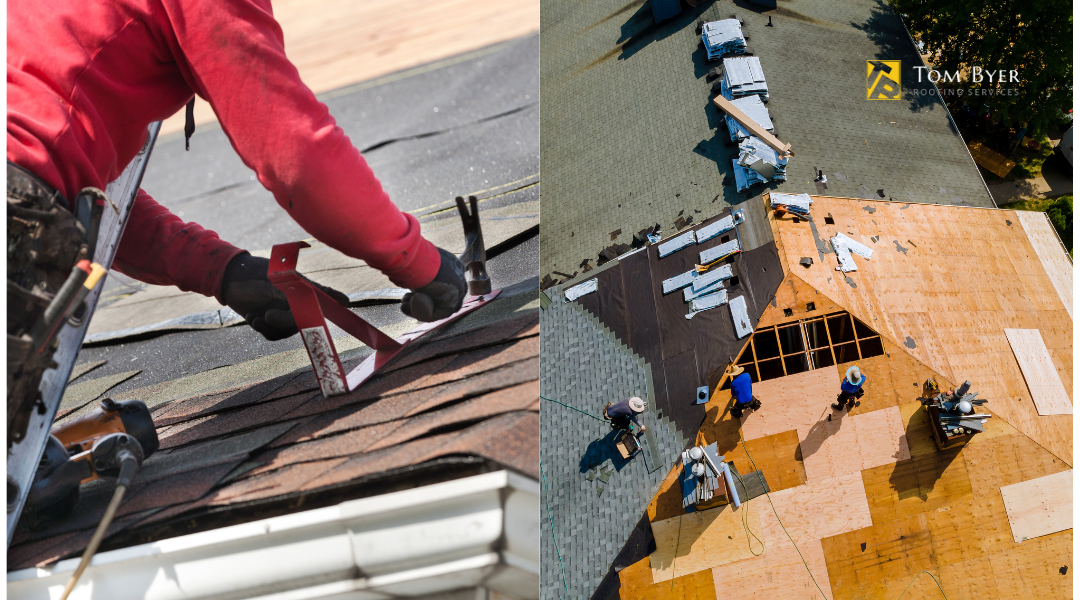
Key Factors To Help You Decide
When deciding whether to repair or replace your roof, several key factors come into play. These include the extent of damage, the age of your roof, costs involved, and long-term benefits. Understanding these aspects will help guide your decision in a clear and informed manner.
Evaluating The Extent Of Damage
Start with a thorough roof inspection. Look for signs of wear, leakage, and structural issues. If damage is localized, such as a few missing shingles or small leaks, repairs might suffice. Simple fixes often cost less than a replacement. However, extensive damage—especially if it’s widespread or affects key structural elements—may warrant a full replacement.
A professional inspection can provide a detailed assessment of your roof’s condition. They can identify hidden issues that might not be immediately visible. Detailed understanding of the damage helps in making a more informed decision.
Considering The Age Of Your Roof
Roof age plays a crucial role in your decision-making. Most roofing materials have a lifespan of 15 to 30 years. If your roof is nearing the end of its expected life, replacement is often the better choice.
For roofs older than 20 years, even minor repairs may only be a temporary solution. You might face repeated maintenance costs down the line. A roof that is still relatively young can benefit from repairs, especially if it is under warranty.
Comparing Costs For Repairs And Replacement
Cost is a significant factor in your decision. Repair costs are typically lower upfront, but they can add up over time. Evaluate the estimated costs for necessary repairs versus the total replacement cost.
Replacement costs usually encompass materials, labor, and any necessary permits. While high, consider the potential long-term savings on energy bills and reduced repair needs. Create a detailed list of estimated expenses to analyze which option aligns better with your budget.
Weighing Long-Term And Short-Term Benefits
Evaluate the long-term and short-term benefits of each option. Repairs might offer immediate savings but can lead to higher costs in the future. Frequent maintenance on an aging roof can become a financial burden.
On the other hand, a new roof can enhance property value and improve energy efficiency. Investing in a replacement might save you money on energy bills over time. Consider how each choice aligns with your future plans for your home.
Exploring Energy Efficiency Upgrades
While deciding, think about energy efficiency upgrades. New roofing materials often provide better insulation and reflectivity, which can lower energy bills. If your roof is nearing replacement, this is an ideal time to consider energy-efficient options.
Replacing an old roof with a modern, energy-efficient model can significantly reduce your heating and cooling costs. In many cases, governments offer incentives for using eco-friendly materials. This can make a replacement more appealing financially.
Evaluating energy efficiency can greatly impact your decision-making process regarding roof repairs or replacement.
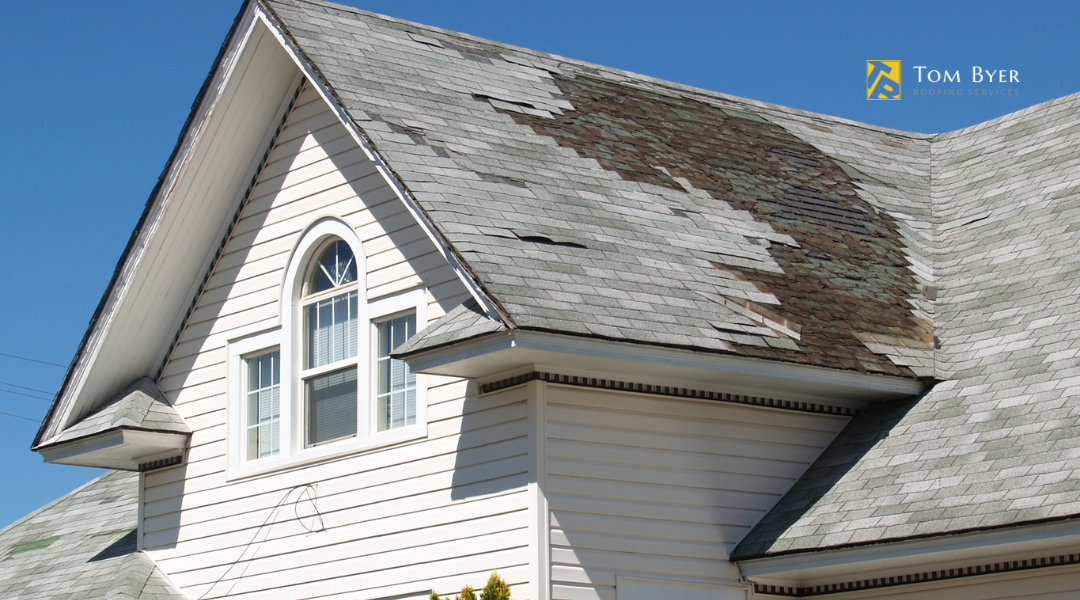
Signs That Point To Repairs
If you notice any issues with your roof, it’s essential to act quickly. Certain signs indicate that repairs may be sufficient to keep your roof functioning well. Understanding these indicators can help you make an informed decision.
Minor Leaks Or Localized Damage
A small leak or localized damage can often be repaired without needing a full roof replacement. Look for water stains on your ceiling or walls. These are signs of water damage that may come from a leaky roof.
Check for wet spots, which could indicate a breach in your roofing material. If the damage is minor and isolated, repairs are typically cost-effective. It’s important to address these issues quickly to prevent further damage and mold growth in your home. Regular inspections can catch these leaks early.
Missing Or Damaged Shingles
Inspect your roof for missing or damaged shingles, especially after a storm. Missing shingles expose your roof to water damage. Replacing them saves you money compared to more extensive repairs later.
Check for curled, cracked, or broken shingles too. These damages can lead to leaks and affect your roof’s integrity. If you find only a few bad shingles, you might only need to replace those, rather than your entire roof. Timely repairs can prevent larger issues down the line.
Wear And Tear Around Roof Features
Pay attention to the edges and features of your roof, such as chimneys, vents, and skylights. These areas are common spots for wear and tear. Look for any gaps or damage around these features.
Flashing, the material that seals joints, can deteriorate over time. If you see rust or missing flashing, repairs should be your first step. Addressing this quickly helps prevent water from seeping into your home. Regular maintenance around these areas is crucial for the longevity of your roof.
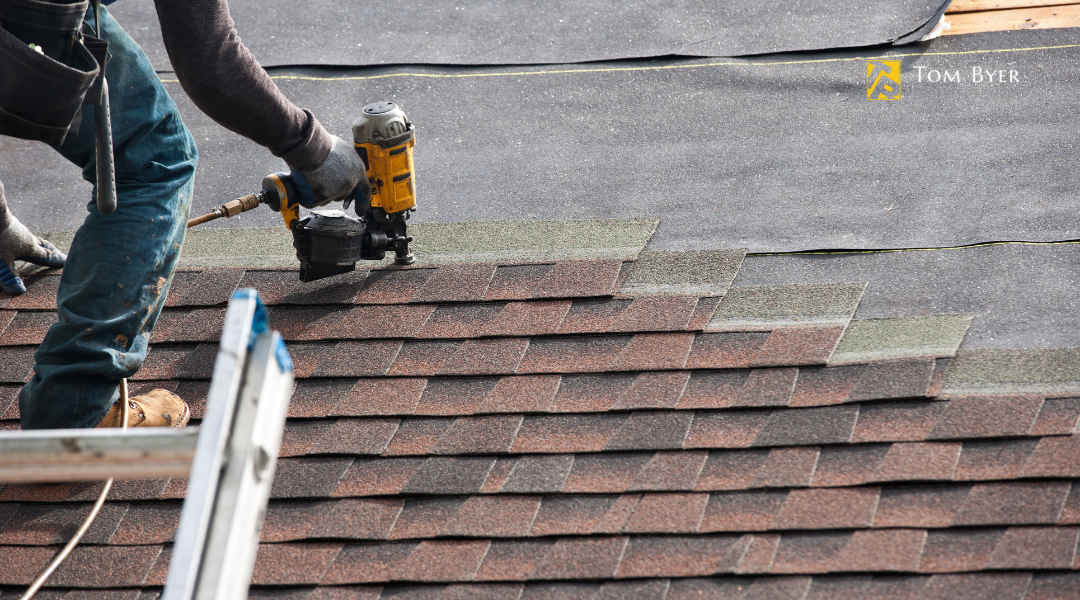
Signs That Suggest A Replacement Is Needed
When assessing your roof, certain signs indicate that a replacement may be necessary. Recognizing these signs can help you avoid further damage and costly repairs.
Widespread Damage Across The Roof
If you notice extensive damage spread over large areas of your roof, this is a strong signal for replacement. Look for missing shingles, leaks, or significant wear on multiple sections.
Structural damage can worsen quickly, leading to larger issues inside your home. If you find multiple leaks or water stains on ceilings, this could point to a compromised roof.
Additionally, if the roof surface has noticeable curling or buckling shingles, it may indicate that it’s no longer effective in protecting your home. In such cases, consider a complete replacement to restore your roof’s integrity.
Frequent Repairs Adding Up In Costs
If you frequently need to repair your roof, the costs can quickly add up. Small issues may be fixable, but if repairs are a regular occurrence, it’s usually more cost-effective to replace the entire roof.
Consider tracking your repair expenses over the last few years. If these bills exceed a certain percentage of the cost of a new roof, it may be time to invest in a replacement.
Repeated repairs also affect your roof’s lifespan and can compromise structural integrity. It is essential to weigh not just the financial factors but also the ongoing hassle and stress of constant roof maintenance.
Roof’s Lifespan Has Reached Its Limit
Every roof has a lifespan that typically ranges from 20 to 25 years, depending on materials used. If your roof is nearing this age, signs of deterioration will become more apparent.
As roofs age, they become more susceptible to damage from weather events. This can lead to leaks and increased energy bills due to poor insulation.
If your roof is approaching its expected lifespan and you observe issues such as sagging or extensive shingle damage, consider a replacement. Investing in a new roof can provide peace of mind and enhance your home’s value.
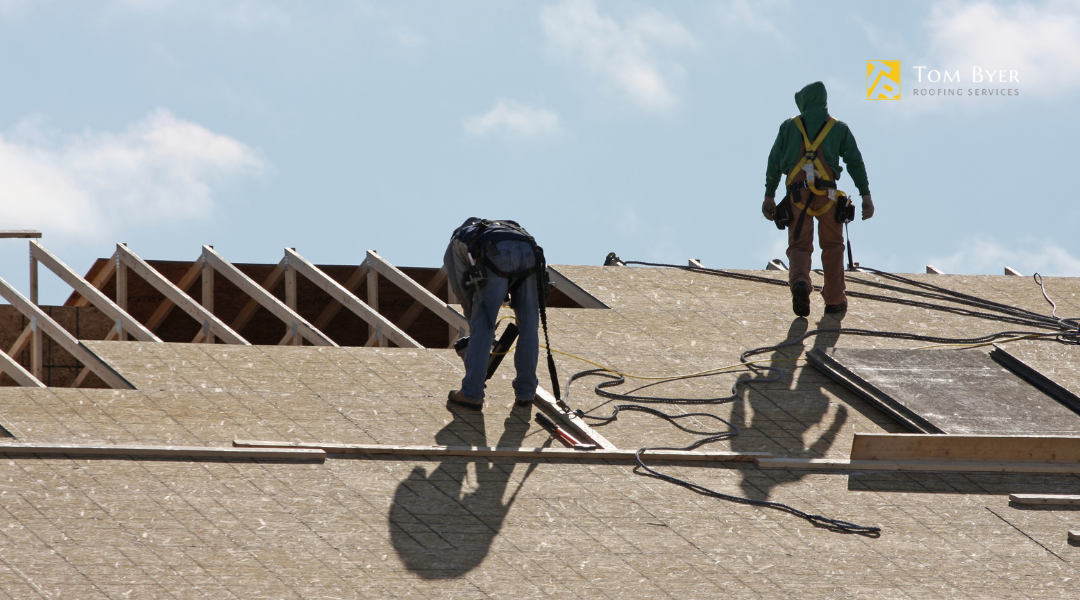
Practical Examples Of Common Scenarios
Deciding whether to repair or replace your roof can feel overwhelming. Here are some specific situations that illustrate when each option can be the best choice for your home.
When Repairs Were The Best Option
Consider a scenario where you notice a few missing shingles after a storm. If your roof is relatively new, typically less than ten years old, this is often a minor issue.
In this case, you can:
- Replace just the missing shingles to restore integrity.
- Check for water leaks in your attic, ensuring no hidden damage.
Another situation might involve minor leaks or small holes. If these problems are localized, a skilled contractor can repair these areas without needing to replace the whole roof. This approach saves you money and extends the life of your current roof.
When A Replacement Saved Costs In The Long Run
Imagine your roof is over 25 years old and showing significant signs of wear, such as curling or multiple leaks. While patching might address immediate issues, it could be a temporary fix leading to more damage.
Choosing to replace the roof can be cost-effective in the long run:
- A new roof comes with a warranty that often lasts 20-30 years, providing peace of mind.
- Modern materials, like asphalt shingles, offer better energy efficiency, which can reduce your utility bills.
Investing in a new roof might feel steep at first. Yet, it can save you money from constant repairs and increase your home’s value.
Expert Tips For Making The Right Choice
When deciding between roof repairs and replacement, consider these key points:
- Assess the Damage: Check the extent of the damage. A few leaks may only need repairs, while extensive damage could mean replacement.
- Age of Your Roof: If your roof is nearing the end of its lifespan, replacing it might save you money on future repairs.
- Evaluate Costs: Get estimates from multiple roofing contractors. Often, repairs cost less upfront, but replacements may offer better value long-term.
- Insurance Coverage: Speak with your insurance provider. Many policies cover roof replacement costs, helping you manage financial strains.
- Seek Professional Advice: Consult with a trusted roofing contractor. They can provide insights on whether repairs are sufficient or if a replacement is needed.
- Consider Your Plans: Think about how long you plan to stay in your home. A new roof may add value if you’re staying long-term.
- Energy Efficiency: New roofing materials can improve energy efficiency, reducing future utility bills. This is worth considering when making your decision.
- Market Trends: Research real estate trends in your area. A new roof can enhance curb appeal, potentially increasing your home’s value.
Use these tips to make an informed choice and ensure your home remains safe and protected.
Summary: Making An Informed Decision
When deciding between roof repairs and replacement, consider several key factors.
1. Age of Your Roof
If your roof is nearing its lifespan, repairs may only offer a temporary fix. Most asphalt shingles last 20 to 30 years.
2. Extent of Damage
Evaluate the damage. Localized issues, like a few broken shingles, may justify a repair. Larger or widespread damage might signal the need for a full replacement.
3. Cost-Effectiveness
Assess the costs associated with both options. Repairs can be cheaper upfront, but frequent fixes can add up over time. Replacement may be a smarter investment for long-term savings.
4. Property Value
A new roof enhances your home’s curb appeal, which can boost property value. This is especially important if you plan to sell in the near future.
5. Resale Value
Prospective buyers often look for homes with new or well-maintained roofs. A replacement can provide peace of mind and potentially yield a higher resale value.
Consider consulting roofing specialists to get a tailored recommendation that fits your needs and budget. Making an informed decision can protect your home, improve its appearance, and maintain its market value.

